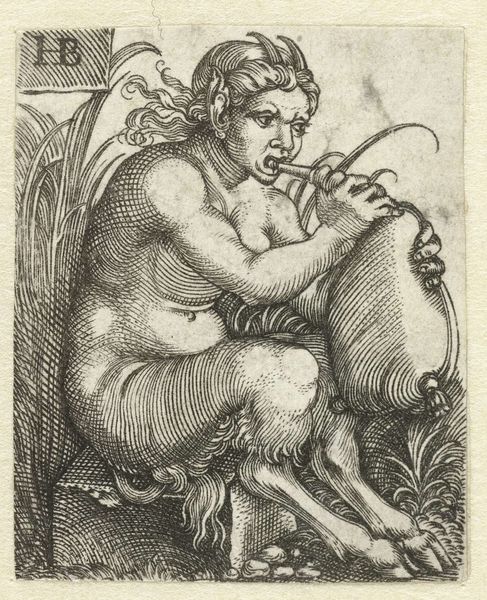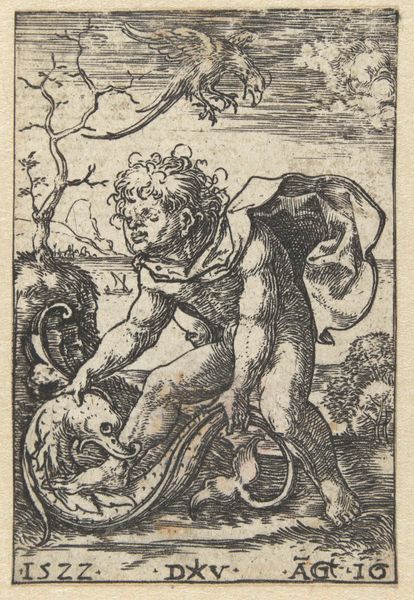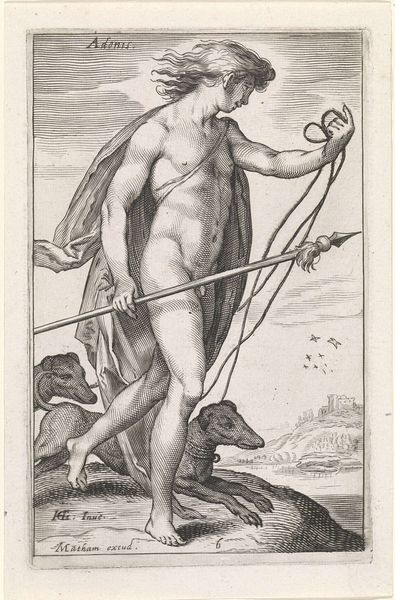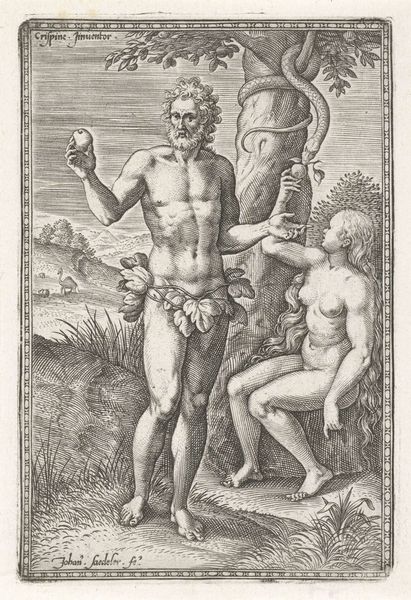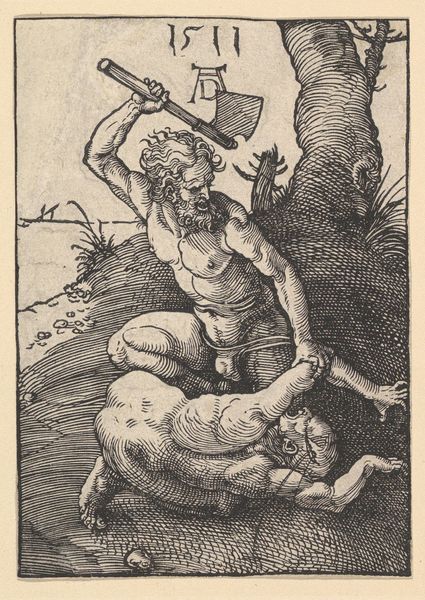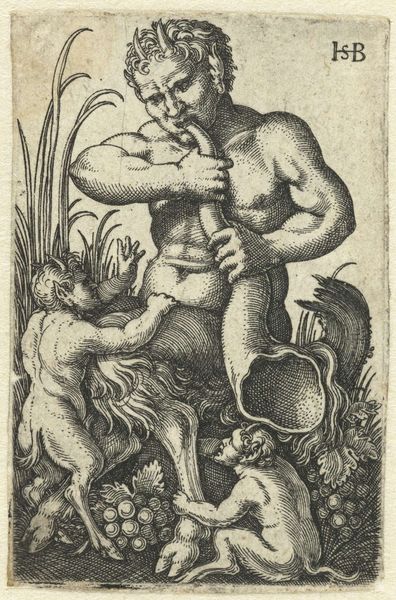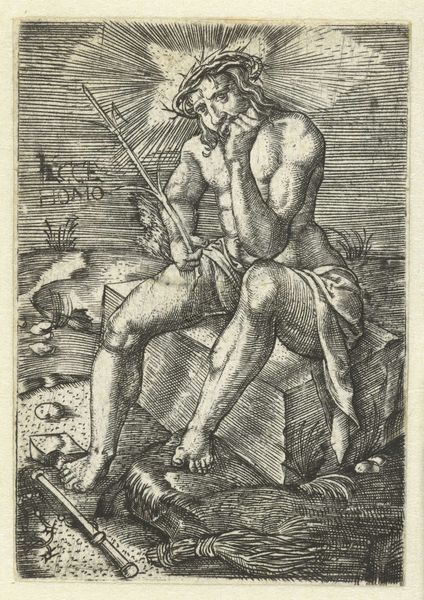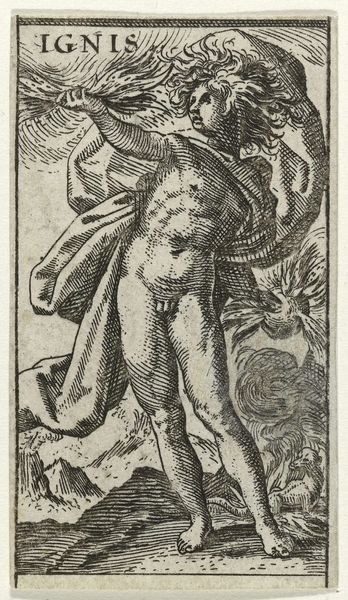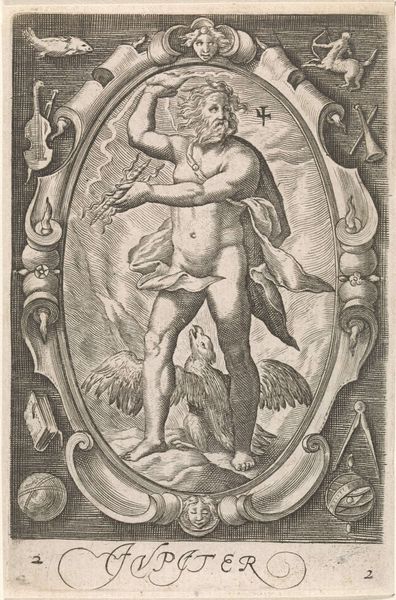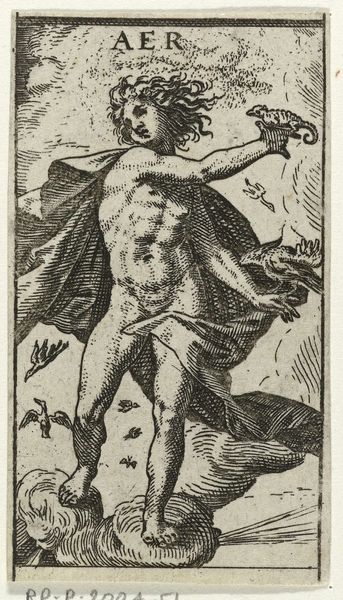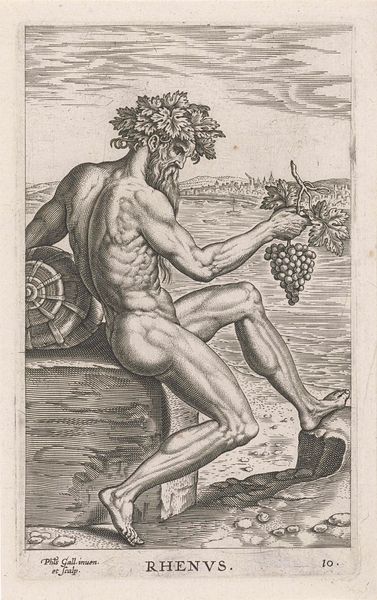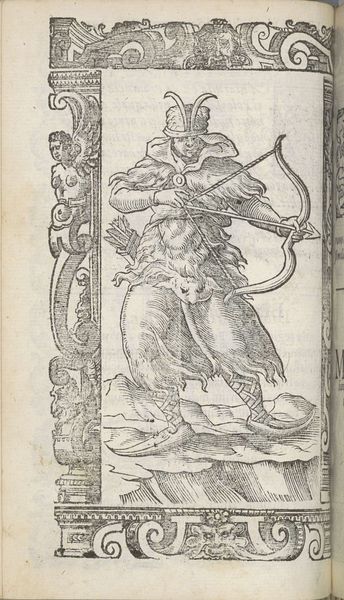
print, pen, engraving
#
allegory
# print
#
pen sketch
#
mannerism
#
figuration
#
form
#
pen-ink sketch
#
line
#
sketchbook drawing
#
pen
#
nude
#
engraving
#
erotic-art
Dimensions: height 41 mm, width 33 mm
Copyright: Rijks Museum: Open Domain
Sebald Beham made this tiny etching of a Satyr playing a lyre sometime in the first half of the 16th century. The image conjures classical antiquity, a popular theme in Northern Renaissance art. The satyr itself, with its goat-like features, evokes the pagan world, but here it is domesticated, playing music. Beham worked in the German city-state of Nuremberg. The rise of printmaking there coincided with the Reformation. Religious reformers saw the printing press as a means to spread their message. Artists like Beham found themselves caught in the middle of religious and political conflict. Prints allowed artists to circulate images widely, which in turn made them powerful tools of propaganda and social commentary. In some ways, the art market of Beham's time was the origin of our contemporary media landscape. Historians rely on various sources, including contemporary books, pamphlets, and archival records, to reconstruct the context in which prints like this were made and consumed. By understanding the social and institutional forces that shaped artistic production, we can gain a deeper appreciation of the complex meanings embedded in these images.
Comments
No comments
Be the first to comment and join the conversation on the ultimate creative platform.
